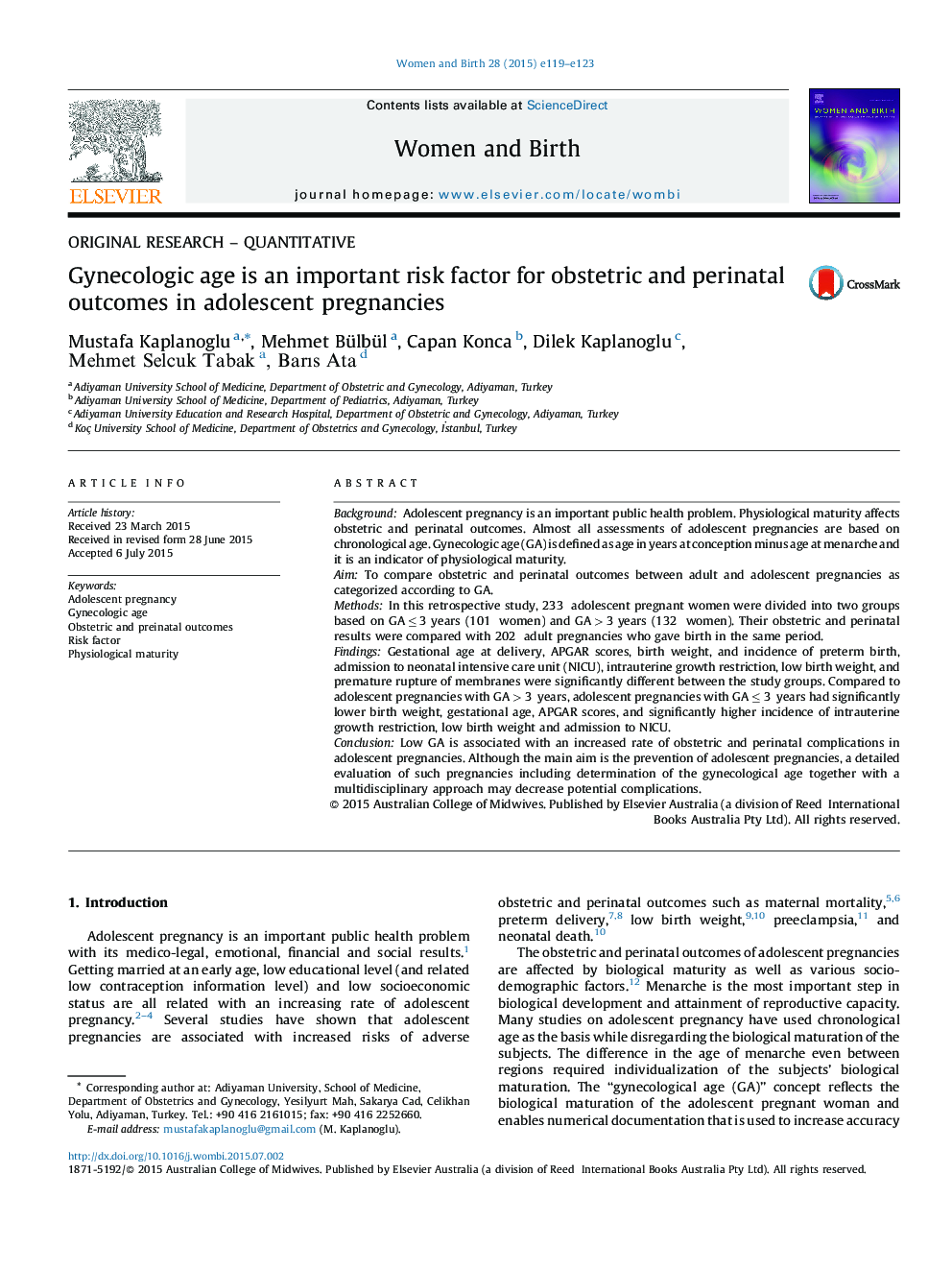| Article ID | Journal | Published Year | Pages | File Type |
|---|---|---|---|---|
| 2636500 | Women and Birth | 2015 | 5 Pages |
BackgroundAdolescent pregnancy is an important public health problem. Physiological maturity affects obstetric and perinatal outcomes. Almost all assessments of adolescent pregnancies are based on chronological age. Gynecologic age (GA) is defined as age in years at conception minus age at menarche and it is an indicator of physiological maturity.AimTo compare obstetric and perinatal outcomes between adult and adolescent pregnancies as categorized according to GA.MethodsIn this retrospective study, 233 adolescent pregnant women were divided into two groups based on GA ≤ 3 years (101 women) and GA > 3 years (132 women). Their obstetric and perinatal results were compared with 202 adult pregnancies who gave birth in the same period.FindingsGestational age at delivery, APGAR scores, birth weight, and incidence of preterm birth, admission to neonatal intensive care unit (NICU), intrauterine growth restriction, low birth weight, and premature rupture of membranes were significantly different between the study groups. Compared to adolescent pregnancies with GA > 3 years, adolescent pregnancies with GA ≤ 3 years had significantly lower birth weight, gestational age, APGAR scores, and significantly higher incidence of intrauterine growth restriction, low birth weight and admission to NICU.ConclusionLow GA is associated with an increased rate of obstetric and perinatal complications in adolescent pregnancies. Although the main aim is the prevention of adolescent pregnancies, a detailed evaluation of such pregnancies including determination of the gynecological age together with a multidisciplinary approach may decrease potential complications.
